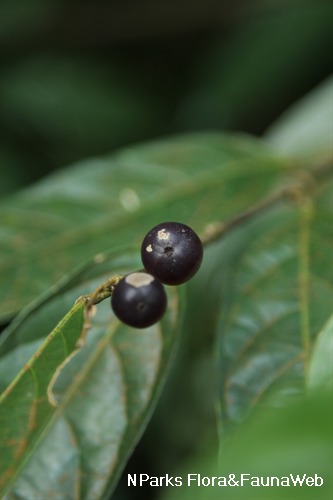
Back
Aporosa frutescens Blume
| Family Name: | Phyllanthaceae |
| Synonyms: | Aporosa banahaensis (Elmer) Merr., Aporosa similis Merr., Aporosa fruticosa (Blume) Müll.Arg. |
| Common Name: | Bastard Rukam, Rukam Utan |
Name
Classifications and Characteristics
| Plant Division | Angiosperms (Flowering Seed Plants) (Dicotyledon) |
|---|---|
| Plant Growth Form | Tree (Medium (16m-30m)) |
| Lifespan (in Singapore) | Perennial |
| Mode of Nutrition | Autotrophic |
| Plant Shape | Irregular |
| Maximum Height | 27 m |
Biogeography
| Native Distribution | Myanmar, Thailand, Sumatra, Peninsular Malaysia, Singapore, the Philippines, Borneo, Java and Sulawesi, and the Moluccas |
|---|---|
| Native Habitat | Terrestrial (Primary Rainforest, Mountain, Secondary Rainforest, Riverine, Disturbed Area / Open Ground) |
| Preferred Climate Zone | Tropical, Sub-Tropical / Monsoonal |
| Local Conservation Status | Native to Singapore (Least Concern (LC)) |
Description and Ethnobotany
| Growth Form | It is a tree up to 27 m tall with trunk up to 35 cm across. |
|---|---|
| Foliage | Its simple, alternate, stalked leaves have papery to thin leathery leaf blades that are narrowly egg-shaped to narrowly elliptic, greyish green to yellowish green when dried, and 6.5-20 by 1.5-7.5 cm. Its midrib is slightly prominent above and prominent below. |
| Flowers | Its male flowers are 0.3-0.7 mm long and grow in clusters of 1-4 on flowering shoots that are 5-22 mm long. Its female flowers are 1.5-3 mm long and grow on female flowering shoots that are 2-7 mm long. Its flowers are yellow. |
| Fruit | Its fruits are round, yellow-orange-red, light or brownish-yellow when dried, 9-15 by 10-15 mm, and grow in clusters that are 3-11 mm long. Each fruit bears 2-4 seeds that are ellipsoid, covered with orange-red pulp, and 8-11 by 6-9 by 3-5 mm. |
| Habitat | It grows in primary, secondary, and disturbed forests, on hilltops, hillsides, hill ridges, along river banks, roads, lakes, and forest margins, up to 1500 m altitude. It occurs locally in the Bukit Timah Nature Reserve, Mandai Forest, Nee Soon Swamp Forest, the Western Catchment Area, and Pulau Ubin. |
| Associated Fauna | Its flowers are insect-pollinated. Its seeds are probably dispersed by birds. |
| Cultivation | It can be propagated by seed. |
| Etymology | Greek apo, away from; Greek oros, mountain; Latin frutescens, shrubby or bushy |
| Ethnobotanical Uses | Timber & Products: Its timber is considered second-class and sometimes used for the construction of houses and tool making. Its bark is used to in the batik industry as a mordant. |
Landscaping Features
| Landscaping | It is suitable for parks. |
|---|---|
| Desirable Plant Features | Ornamental Fruits |
| Landscape Uses | Parks & Gardens |
Fauna, Pollination and Dispersal
| Pollination Method(s) | Biotic (Fauna) |
|---|---|
| Seed or Spore Dispersal | Biotic (Fauna) |
Plant Care and Propagation
| Light Preference | Semi-Shade, Full Sun |
|---|---|
| Water Preference | Moderate Water |
| Plant Growth Rate | Moderate |
| Rootzone Tolerance | Moist Soils, Well-Drained Soils, Fertile Loamy Soils |
| Propagation Method | Seed |
Foliar
| Foliage Retention | Evergreen |
|---|---|
| Mature Foliage Colour(s) | Green |
| Mature Foliage Texture(s) | Papery, Leathery, Thin |
| Foliar Type | Simple / Unifoliate |
| Foliar Arrangement Along Stem | Alternate |
| Foliar Attachment to Stem | Petiolate |
| Foliar Shape(s) | Non-Palm Foliage (Ovate, Elliptical) |
| Foliar Venation | Pinnate / Net |
| Foliar Margin | Entire |
Floral (Angiosperm)
| Flower & Plant Sexuality | Unisexual Flowers |
| Flower Colour(s) | Yellow / Golden |
|---|---|
| Flower Grouping | Cluster / Inflorescence |
| Flower Location | Axillary |
Fruit, Seed and Spore
| Mature Fruit Colour(s) | Orange, Black |
|---|---|
| Fruit Classification | Simple Fruit |
| Fruit Type | Dehiscent Dry Fruit , Capsule |
Image Repository
Others
| Master ID | 1424 |
|---|---|
| Species ID | 2717 |
| Flora Disclaimer | The information in this website has been compiled from reliable sources, such as reference works on medicinal plants. It is not a substitute for medical advice or treatment and NParks does not purport to provide any medical advice. Readers should always consult his/her physician before using or consuming a plant for medicinal purposes. |

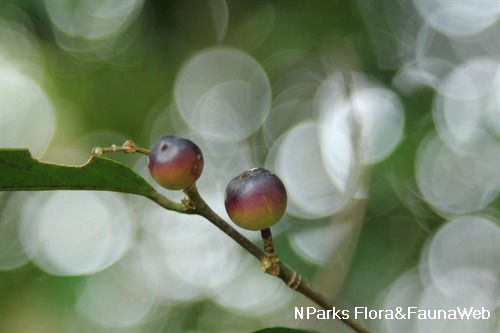
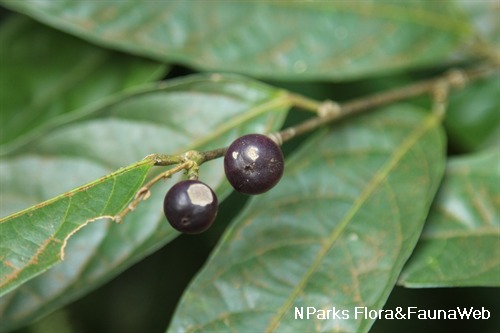
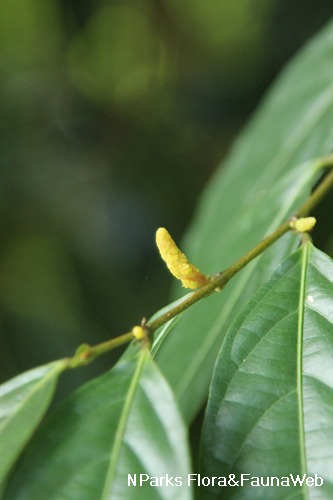
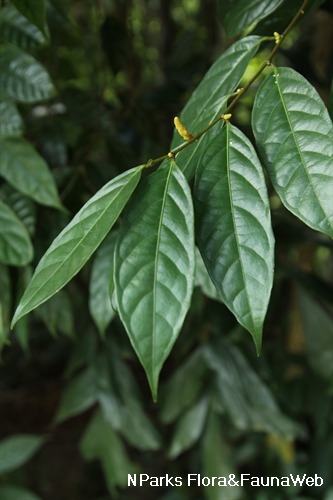
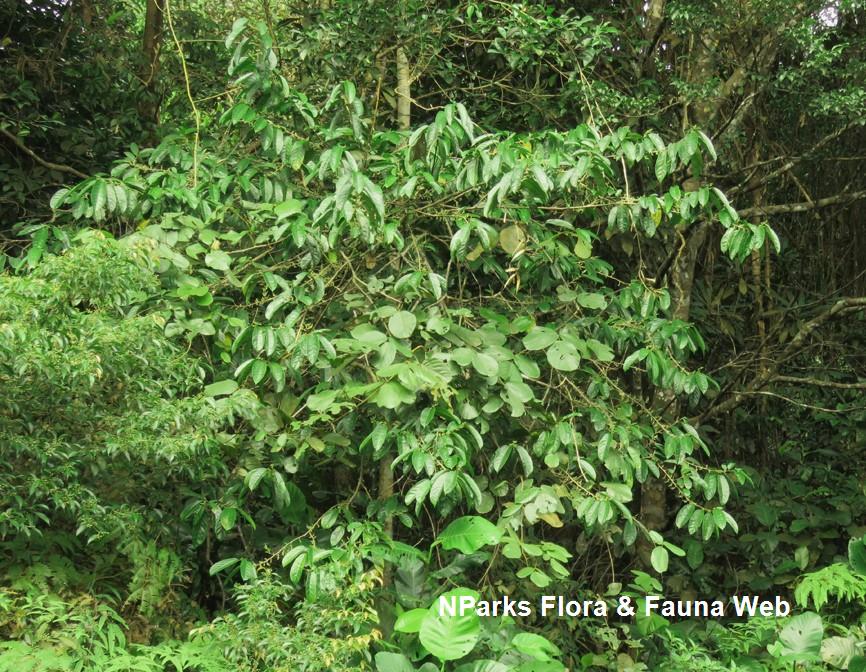
_lowres.jpg)
_lowres.jpg)
_lowres.jpg)
_lowres.jpg)
_lowres.jpg)
_lowres.jpg)
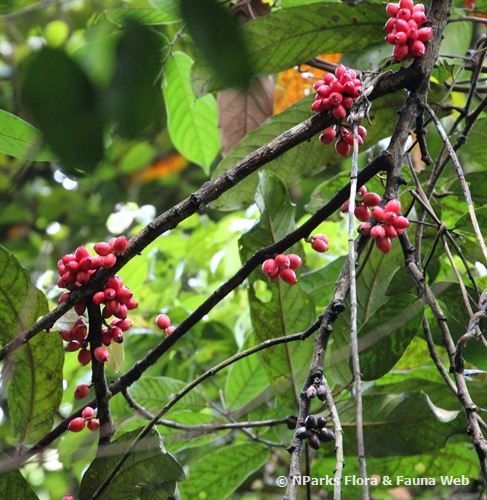
.jpg)